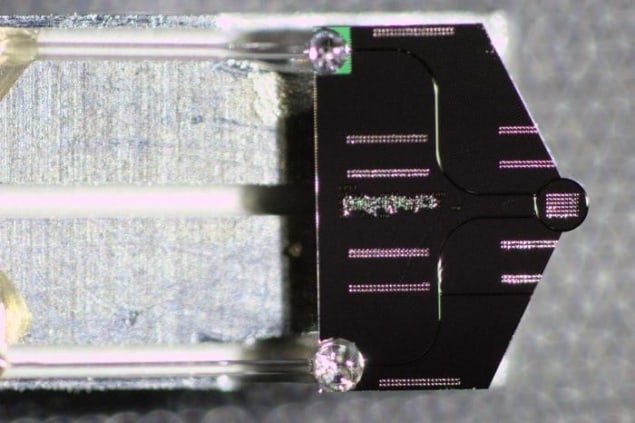
The interaction between free electrons and nonlinear optical states has been used by scientists in Switzerland and Germany to tailor an electron beam that could be used for new types of microscopy. The team was led by Yujia Yang at EPFL.
Electron microscopes use focused beams of free electrons to take images at much higher spatial resolution than optical instruments. Lasers that deliver ultrashort pulses allow researchers to study phenomena that occur on very short timescales. For decades both techniques have been very useful to scientists. More recently, researchers have combined the two technologies to create ever more powerful experimental methods that manipulate electron beams on ultrashort timescales.
Nonlinear opportunities
Yet there is one particularly important area that has so far gone untouched by these latest advances, as Yang explains.
“Nonlinear optical phenomena are of paramount importance in science and technology alike and have heralded numerous breakthroughs. However, the use of nonlinear optical effects to control free-electron beams has rarely been experimentally studied; nor has the use of free electrons to probe nonlinear dynamics been experimentally investigated.”
Nonlinear effects occur when light changes the optical properties of a material, which in turn affects how that light interacts with the material. This usually occurs at high light intensities – and in materials such as photonic crystals, which can be engineered to have specific nonlinear properties.
To combine nonlinear photonics with electron microscopy, Yang’s team used a type of photonic microresonator that is known to have a diverse array of nonlinear optical effects. In particular, the microresonator’s refractive index changes as light intensity varies.
Frequency comb
Nonlinear effects can be used to create optical frequency combs. These are trains of short light pulses that have optical spectra comprising spikes at evenly-spaced frequencies – resembling the teeth of a comb.
“Such combs have been intensively studied not only with respect to fundamental spatiotemporal pattern formation dynamics, but also technologically in an ever-growing number of applications,” says Yang. “Now, we couple such nonlinear optical states in microresonators with the electron beam in an electron microscope.”
In their experiment, the microresonator was integrated onto a chip and driven by a continuous-wave laser. The device created frequency-comb pulses called dissipative Kerr solitons. An electron-microscope beam was sent through part of the microresonator, where it interacted with the light. This caused distinct characteristics of comb pulses being imprinted on the electron beam – characteristics that the team was able to observe.
Kerr solitons
Yang describes their success, “we were able to generate dissipative Kerr solitons in situ, and spectrally identify electrons that have interacted with the femtosecond soliton pulse. In addition, we directly probe the soliton properties from the electron spectra and retrieve the hallmark signatures of soliton formation.”

Molecular measuring stick could advance super-resolution microscopy
Yang believes that the team’s research will be built upon. “Our work unlocks the potential to probe ultrafast transient nonlinear optical dynamics with nanometre–femtosecond spatiotemporal resolution, and to directly access to the intracavity field,” he explains. “This could assist the investigation and development of key processes and components in nonlinear integrated photonics.”
Their approach could also allow researchers to create on-chip devices that generate entirely new optical waveforms – which would offer new possibilities for the advanced control of electrons.
Furthermore, by exploiting interactions between free electrons and Kerr solitons on timescales shorter than 100 fs, the effect could push electron microscopy to shorter timescales without any major changes to existing microscope designs.
The research is described in Science.
- SEO Powered Content & PR Distribution. Get Amplified Today.
- PlatoData.Network Vertical Generative Ai. Empower Yourself. Access Here.
- PlatoAiStream. Web3 Intelligence. Knowledge Amplified. Access Here.
- PlatoESG. Carbon, CleanTech, Energy, Environment, Solar, Waste Management. Access Here.
- PlatoHealth. Biotech and Clinical Trials Intelligence. Access Here.
- Source: https://physicsworld.com/a/nonlinear-optical-states-are-imprinted-on-an-electron-beam/



